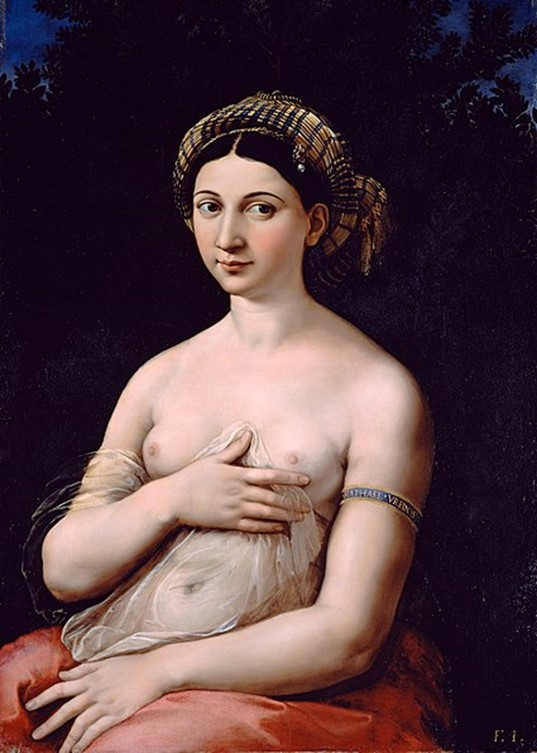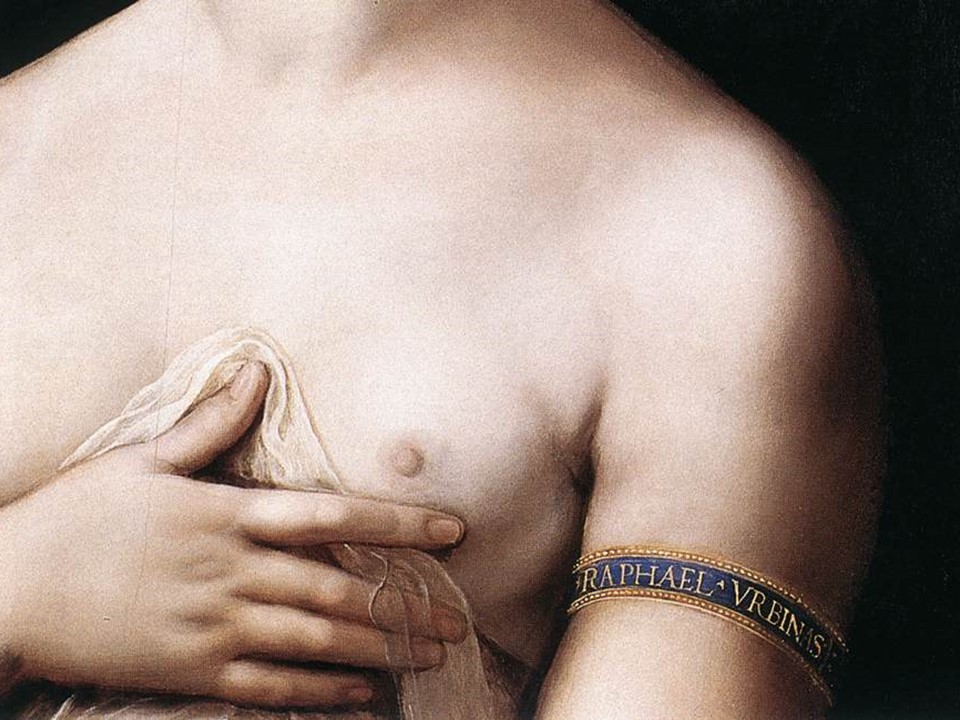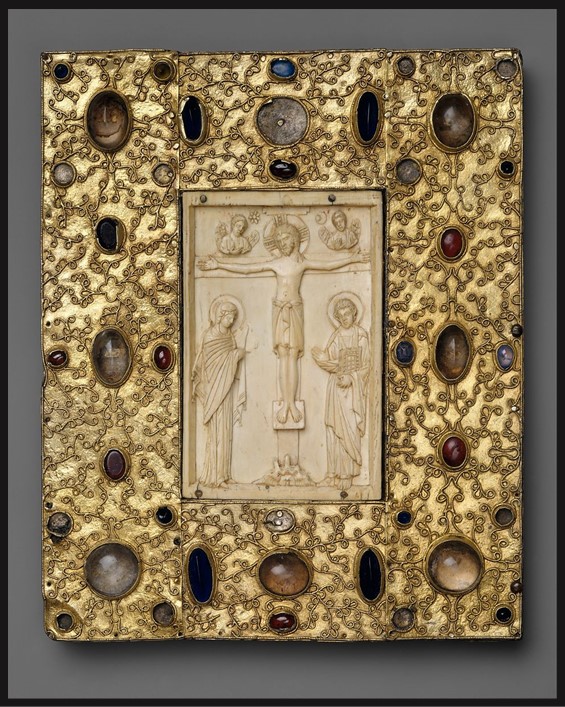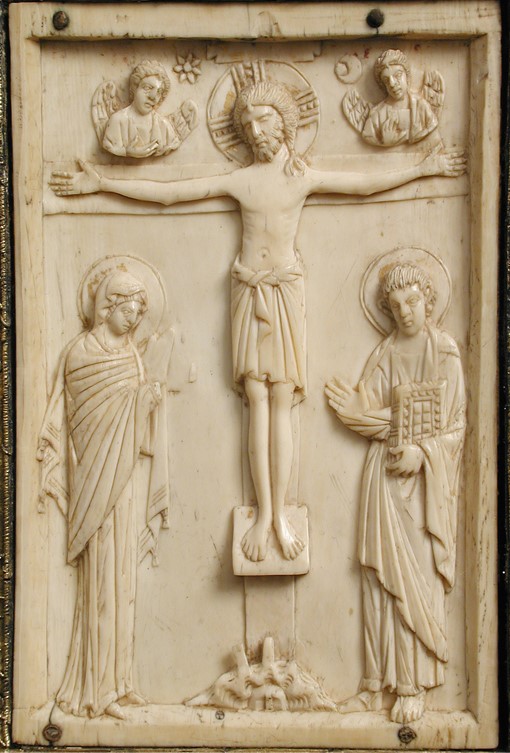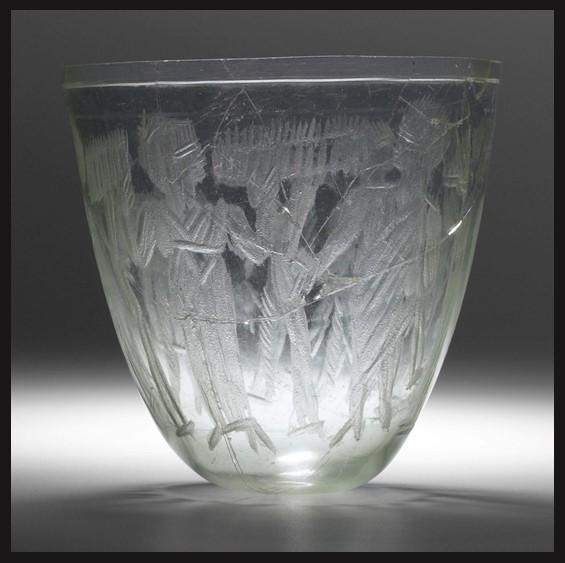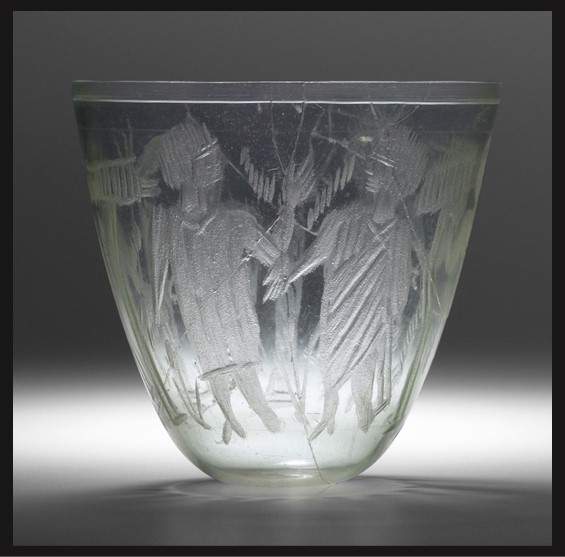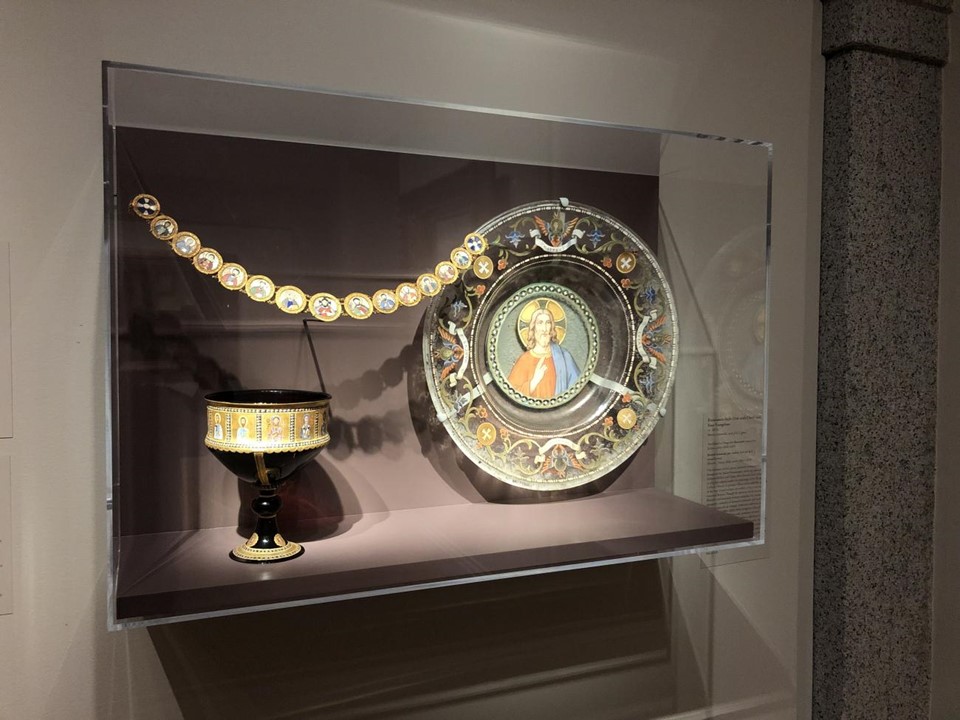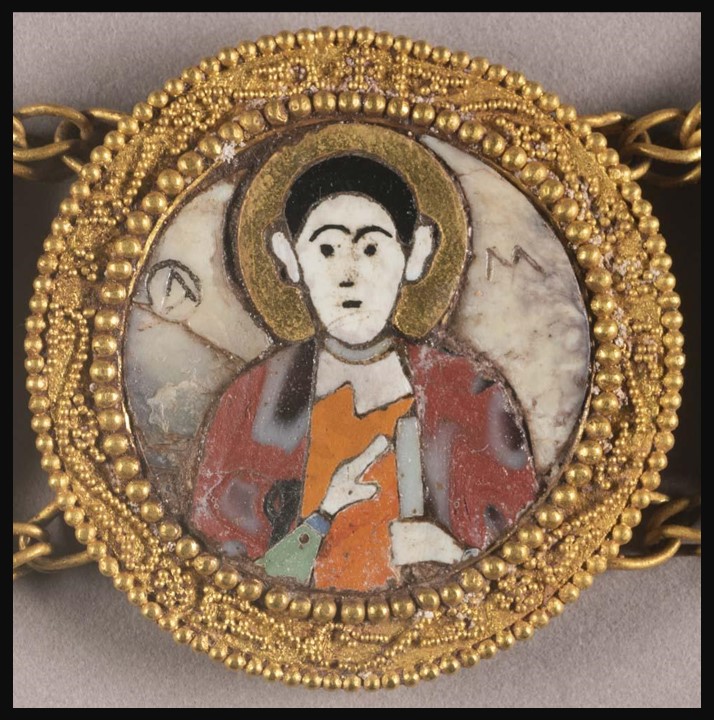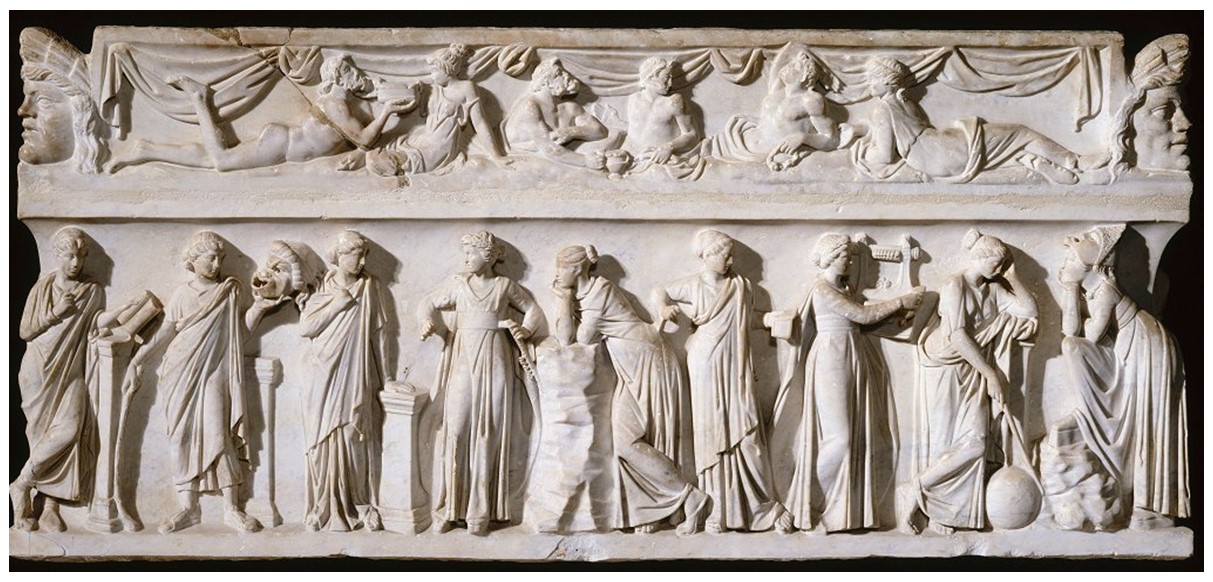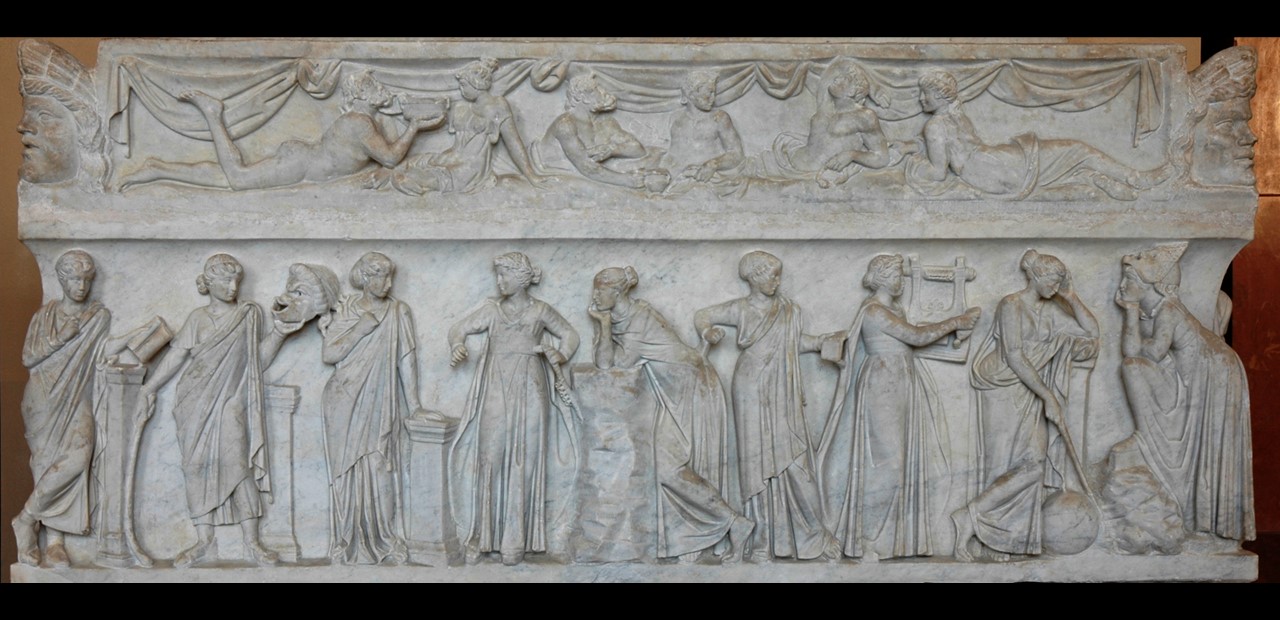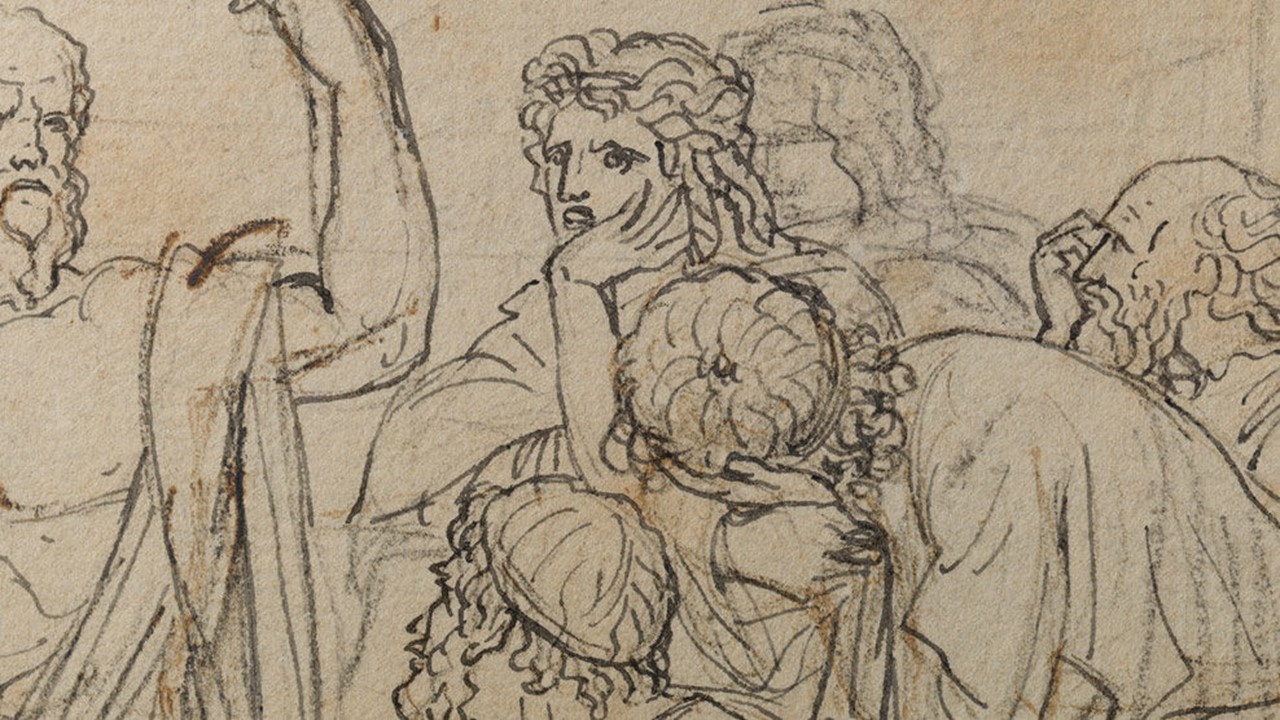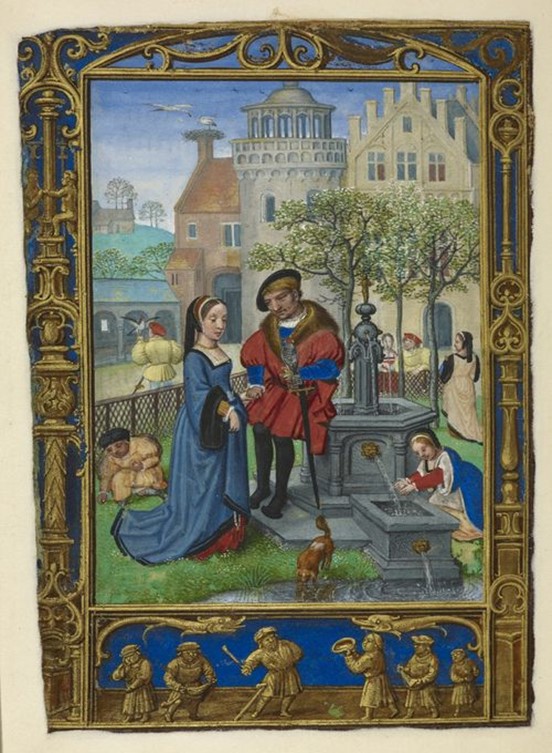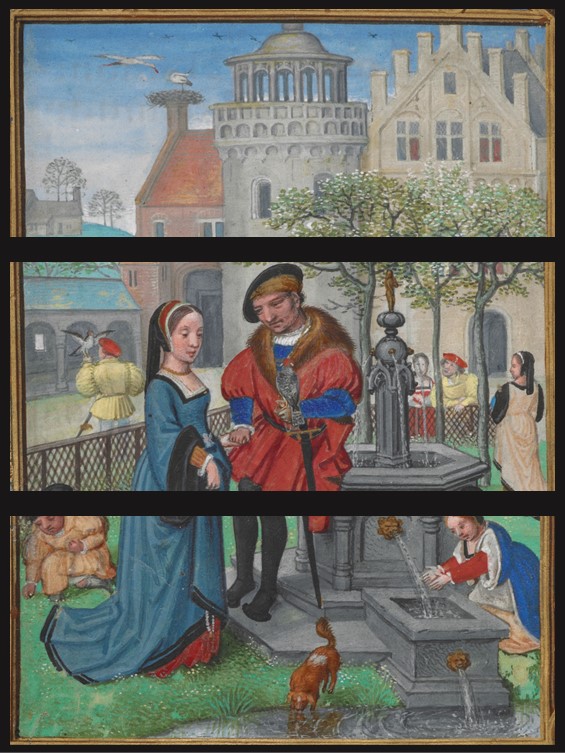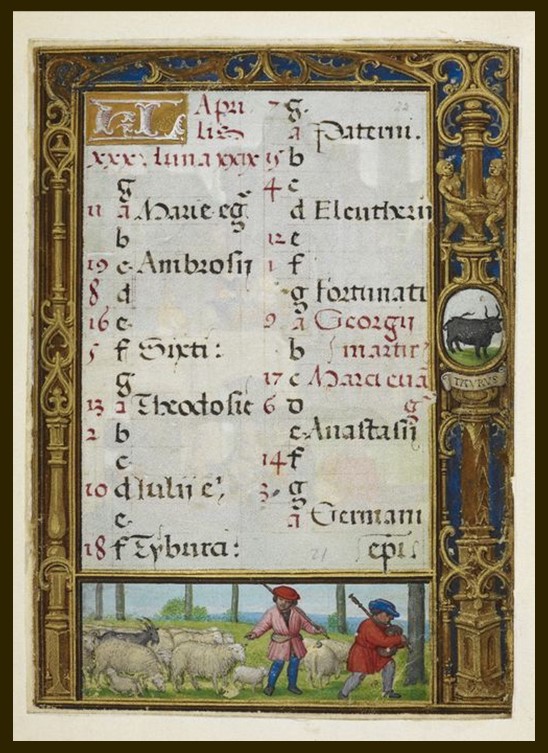
Woman in Monsieur Forest’s Garden, 1891, Oil on Board, 60,7 × 55 cm, Basil and Elise Goulandris Foundation, Athens, Greece
https://goulandris.gr/el/collection/highlights
How vainly men themselves amaze / To win the palm, the oak, or bays, / And their uncessant labours see / Crown’d from some single herb or tree, / Whose short and narrow verged shade / Does prudently their toils upbraid; / While all flow’rs and all trees do close / To weave the garlands of repose … / Fair Quiet, have I found thee here, / And Innocence, thy sister dear! / Mistaken long, I sought you then / In busy companies of men; / Your sacred plants, if here below, / Only among the plants will grow. / Society is all but rude, / To this delicious solitude… writes Andrew Marvell (1621 – 1678) back in the 17th century… and I think that maybe… Henri de Toulouse-Lautrec’s Woman in Monsieur Forest’s Garden, sitting uptight with fingers intertwined, seeks in the wild garden of Père Forest… delicious solitude… a place of repose and restfulness… an escape from the more frenetic world of public life that lies beyond the boundaries of the garden. https://interestingliterature.com/2017/07/a-short-analysis-of-andrew-marvells-the-garden/ and https://poets.org/poem/garden
In Montmartre, in Paris, where Henri de Toulouse-Lautrec lived, at the bottom of rue Caulaincourt, not far from Place de Clichy, Père Forest, an enthusiastic Parisian archer, owned a half-wild, half-cultivated garden where he often welcomed friends to walk in the undergrowth. Among Père Forest’s friends was Toulouse-Lautrec, whose studio was nearby, and upon the arrival of spring, used to walk down to his friend’s garden, where he would receive his models, paint en plein air surrounded by a large group of onlookers, and share many drinks with old friends and acquaintances till the late hours of the afternoon. https://www.histoires-de-paris.fr/toulouse-lautrec-jardin-pere-forest/
From 1889 to 1891, Lautrec experimented with the plein-air approach of the Impressionists, producing a group of studies showing figures set against the foliage in the garden of Monsieur Forest, his neighbor in the Paris district of Montmartre. Lautrec referred to these self-imposed exercises in technique as “impositions,” for which friends, as well as models, posed. One such “imposition” is the Basil and Elise Goulandris’s Foundation painting titled Woman in Monsieur Forest’s Garden of 1891. https://vrallart.com/artworks/woman_in_the_garden_of_monsieur_forest/ and https://goulandris.gr/en/artwork/henri-de-toulouse-lautrec-woman-in-monsieur-forests-garden
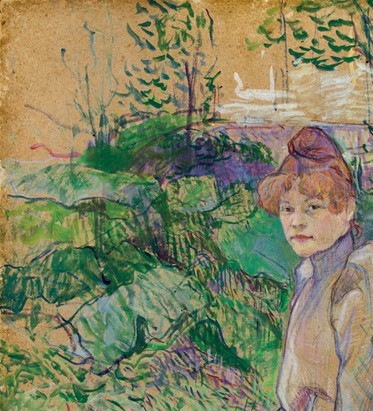
Woman in Monsieur Forest’s Garden (detail), 1891, Oil on Board, 60,7 × 55 cm, Basil and Elise Goulandris Foundation, Athens, Greece
https://goulandris.gr/el/collection/highlights
The woman depicted in the Lautrec painting in Athens was named Honorine. She was most probably not a professional model or prostitute, and she was painted at least twice. In the Athens version, according to the Goulandris Foundation experts, the model appears in a three-quarter pose, looking the viewer straight in the eye, with her fingers intertwined, without wearing accessories. The painter opted for a minimalist palette with white, green, violet, and a warmer touch for the reddish-gold hair. The face is undoubtedly more treated: the thin brush strokes are small and precise; the features are subtly rendered, refuting the accusations that the painter constantly pursued caricature at that time. The gaze, reflecting a subtle worry, is not at all distant, but straight and gracious. https://goulandris.gr/en/artwork/henri-de-toulouse-lautrec-woman-in-monsieur-forests-garden

Woman with Gloves (Honorine Platzer), 1891, oil on cardboard, 54×40 cm, Musée d’Orsay, Paris, France
https://www.musee-orsay.fr/en/node/89835
Toulouse-Lautrec painted Honorine Platzer three times as he clearly had some affection for her. In the Musée d’Orsay painting Woman with Gloves, the artist captured his model almost in spite of herself, her gaze focused elsewhere… ignoring the painter. Honorine was a slim, elegant woman with beautiful strawberry-blond hair and a gentle yet strong character. Both paintings show how close Toulouse-Lautrec approach to portraiture was to the Impressionists, who frequently painted outside using colours splashed with sunlight. But whereas the Impressionists searched out the passing moment, the ephemeral nature of the effects of light, and did not linger over the features in this type of portrait, Lautrec, in contrast, would disregard the changing elements to capture the inner personality of his models. https://www.musee-orsay.fr/en/node/89835
For a PowerPoint on Henri de Toulouse-Lautrec’s Portraits of Women in the Garden of Père Forest, please… Check HERE!





